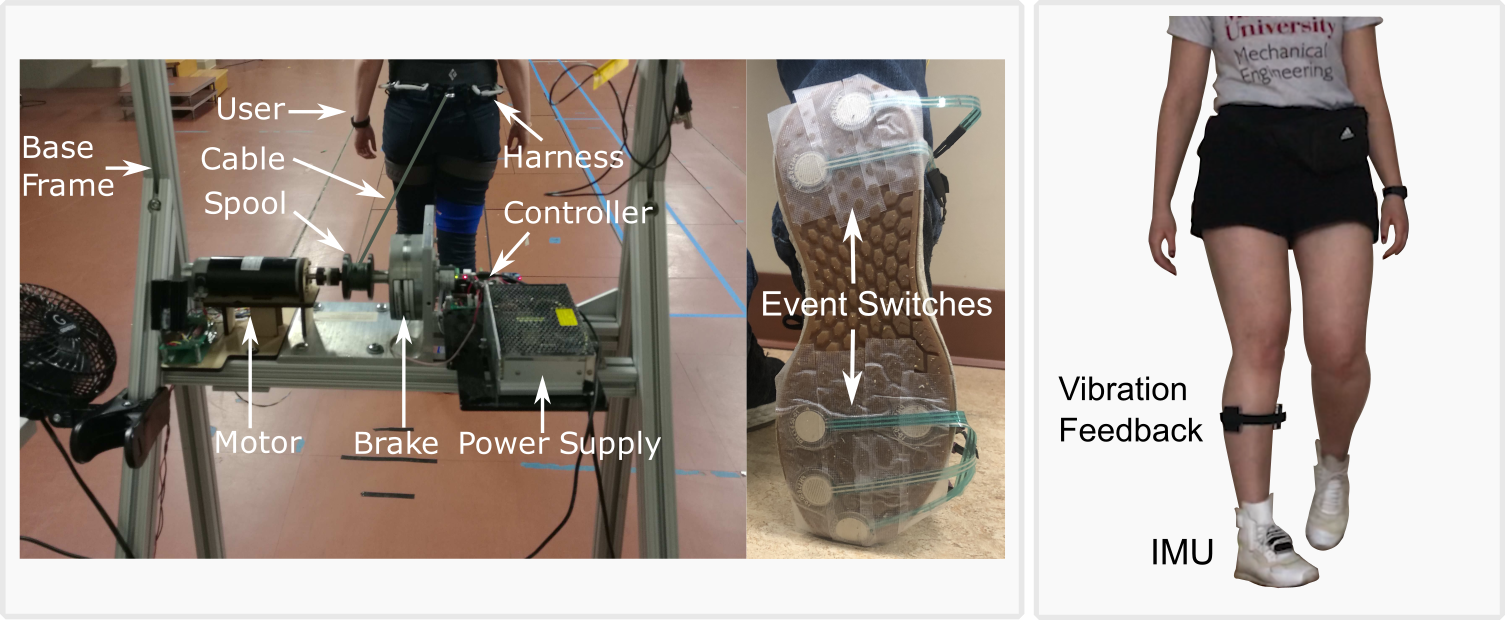
Wearable sensors, haptic actuators, and simple real-time feedback algorithms can be used to deliver haptic cues to a walking person. Our Gait Propulsion Trainer (left) periodically resists the user’s forward progress to try to improve gait speed and symmetry, while a new commercial wearable biofeedback system (right) uses vibrations to try to improve knee loading.
Restoring healthy gait after injury, stroke, or joint disease is a core part of the rehabilitation process. Novel haptic devices provide an opportunity to supplement current medical practice to improve walking speed, symmetry, or joint loading in clinical populations. These devices can be used in-clinic, such as our Gait Propulsion Trainer (GPT), and some could also support at-home treatment, such as wearable biofeedback.
Walking speed and symmetry are high priorities for people with hemiparesis from stroke. Invented through a collaboration with Stony Brook University, the GPT helps such individuals by applying periodic stance-phase resistance as the user walks overground [ ]. It consists of two main components: (1) the stationary device provides resistance forces via a cable that tethers the pelvis to a magnetic-particle brake [ ], and (2) the wearable system detects gait events via foot switches to control the timing of the resistance forces [ ]. A preliminary study was conducted with a 24-year-old female with left-side hemiparesis and gait asymmetry following pediatric traumatic brain injury. GPT resistance increased paretic leg propulsive forces generated in late stance by 25% over baseline values, and increased propulsion persisted when GPT resistance was removed in post-braking trials. The results of other GPT studies are being analyzed.
Unlike stroke, knee osteoarthritis is a degenerative disease whose progression is exacerbated by knee loading. Targeted gait retraining to decrease joint loading is an effective conservative treatment strategy that has previously been limited to laboratory settings. To enable ubiquitous rehabilitation in natural environments, we are working to characterize efficacy and user response to a wearable haptic biofeedback device developed by SageMotion, LLC [ ]. Insights from ongoing experiments with this system will inform our invention of new hardware and software for haptic gait rehabilitation.
With increased characterization of the long-term effects of gait retraining on hemiparetic or osteoarthritic gait, these emerging devices can help reshape the rehabilitation process for improved clinical outcomes.
